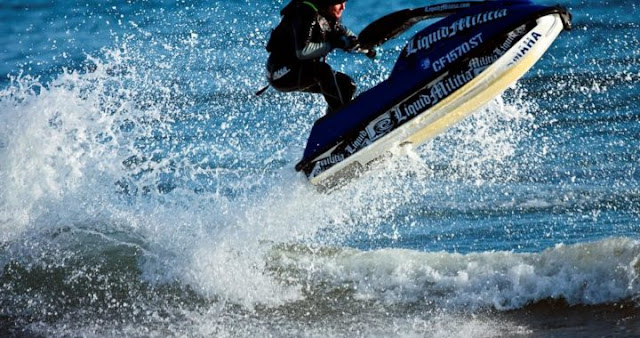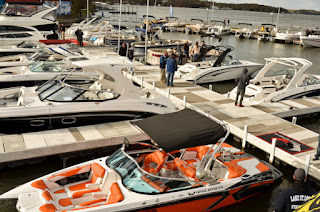PWCs; Wave Runners Fun for Some, Other Not So Fun
You've always wanted a personal water craft (PWC) such as a Jetski, Wave Runner or a Sea-Doo, and now you've got one. Now what? If you plan on taking your new toy out and testing its limits on your favorite lake, river or ocean, there are basic essentials to keeping yourself and children safe.
Personal Water Craft are fast and injuries occur. In a recent study in over a 30-month period, there were 82 wrecks, 57 injuries, and four deaths alone involving PWCs. About half of all injuries were people under the age of 19. The most common cause of the accidens were cited as inexperience (50 percent), inattention (28 percent), and negligent operation (10 percent).
In the U.S., only 16 states require boating education and 10 require special training for using PWC. There are 43 states that have age limitations for PWC, but these range dramatically from age 10 to 16. Missouri Boating Laws and Regulations All persons must be at least 14 years of age to legally operate a motorboat or PWC unless under the direct, onboard supervision of a parent, guardian, or other person 16 years of age or older.
Wave Jumping
Wave jumping is one of the easiest and most popular tricks that can be done on a sit-down jet ski. That’s why you can see jet ski riders jumping over waves and even over bigger boats’ wakes.
But beyond the great fun, wave jumping can be dangerous, as it may end in an accident, or can damage your jet ski in several ways. What’s more, it can endanger others on the water or can be illegal in some cases!
The Risks of Wave Jumping on a Jet Ski
One of the main and most dangerous risks of wave jumping with a jet ski is injury.
You can hit your upper body, your head, or even your chin on the handlebar, which can cause loss of consciousness.
If the rider falls into the water, an accident like this may even end in death if there is nobody nearby who can save your life.
As you can see, huge jumps are huge risks, so if you’re still considering this trick, it’s highly recommended you wear suitable protection (beyond the life jacket of course) like shoes, gloves, or even a helmet to protect your head and chin!
Keep in mind that wave jumping can be dangerous not only to yourself but for others as well.
Jet skiing is rarely a solo activity, since you may prefer riding with others as well.
While you enjoy jumping over waves, you have to pay close attention to other riders as you can bump into them easily when you land!
That’s why you have to pay close attention to others and keep a safe distance! Additionally, it also has many risks if you jump on other boat’s wake, as you can bump into them or even can’t see the oncoming vessels due to the “blind spot”
With that said PWCs can be fun when operated safely and properly. Here are some tips.
1. Always wear a properly fitted lifejacket
2.Anyone can crash, review safety rules before takeoff – It does not matter if you are a newbie rider or a rider with 10 years riding experience. It is always a great idea to review the personal watercraft riding rules before each ride. This needs to go for other people who will be riding the watercraft as well. A lot of the times, the owner of the craft does read and review the riding rules before takeoff, it is their children or other riders who have permission to ride, but have not reviewed any of the rules.
3. Passengers belong on the back - Do not let smaller riders like children ride in the front of the driver. If a passenger is too small to ride on the back of the watercraft and hand on to you, this means they are too small to be on the watercraft altogether. Plus, if you have a collision, your body weight will push and crush them against the handlebars, injuring them badly.
4. Take a course: Many injuries are attributed to careless operation. PWC operation is very different than boating, both in performance and steering. If you or your child is a beginner, a PWC or, at minimum, a boating safety course, is highly recommended.
5. Know how to swim or at least dog paddle. If you fall off or the PWC capsizes you need to be able to get back on.
6. Reboarding a personal watercraft – The designers of personal watercrafts made them very re-boarding friendly. Personal watercraft come in two different models:
- Engine idling: When you fall off of these models, they continue to circle around. You pre-set the idle speed before takeoff.
- Engine shut-off: The name gives it away already. If you fall off this watercraft, the engine kills, and the craft stops moving with a special lanyard. Before taking off, the lanyard ( emergency cut off switch) must properly be attached.
7. Remember All navigation rules apply. PWCs are considered boats and the operator must comply with all state and federal rules of operation.
Enjoy the water and boat safe.




Comments
Post a Comment